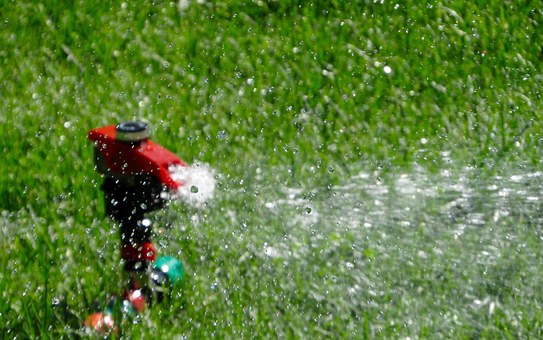
Many use a sprinkler system to irrigate a lawn, but the possibility remains that you’ll over- or under-water it, creating dry soil and patchy grass. Right now, watering essentially gets your grass prepared for summer, but going overboard is just as worse as forgetting to hydrate it at all.
Instead, time how often your sprinkler runs with the following tips:
When it comes to your lawn, this is the golden rule. Landscaping experts say that infrequent but heavy watering – just one to two times per week – lets your plants’ roots grow beyond the 6 in. soil profile. As a result, your soil gets moisture at deeper depths, but not to the point that it’s oversaturated.
Oversaturation prevents oxygen from forming at deeper depths and affects how your roots soak up water. When roots can’t soak up enough to keep pace with summer’s heat, your lawn can develop what’s known as “water stress.” This manifests as brown spots and can lead to insect and disease attacks.
Automatic systems use a controller, which features a timer regulating when and how long your sprinklers run. It’s said that this method proves to be more efficient than manual watering, but how should you set your timer?
While there’s no set amount, you should factor in the following:
Know how long it takes your sprinklers to give your lawn 1 in. of water.
The best times to water. Experts say this is during the morning, when the air is cooler, or after 6 p.m. in the evening. Doing so decreases the amount of evaporation your lawn experiences.
How new is your grass? Newer plants generally need more water than established ones.
Because spring prepares your lawn for summer, it’s recommended that, early on, you only set the timer to one day per week in spring. By summer, you should update it to twice per week. However, if your region’s rainy season extends into summer, keep your timer set at one day per week.
If it’s hot or windy, your lawn could be experiencing higher-than-average water loss, so expect to add more time during these conditions.
As perhaps the most key factor of all, understand how long it takes your sprinkler to give your complete lawn 1 in. of water. This, too, is easier said than done, and factors in the following:
Which pattern does your sprinkler use? Hose sprinklers tend to move in a rectangular pattern over a small- to medium-sized area, while in-ground systems sit closer to the earth and cover a greater area. For this latter configuration, pressure is also a concern, as you could be delivering too much water too quickly to your lawn. If you spot a mist or fog as you water, the pressure may need to be turned down.
Evapotranspiration (ET) Rates and Precipitation Rate (PR) affect how much water your lawn truly receives. The latter aspect indicates how much is applied over the surface during a given hour, and the former is used to describe how much evaporates from the same area over a 24-hour period.
Calculate how much water your sprinklers generate. To do this, many recommend adding six straight-sided containers to your lawn – tuna fish cans are common – and turning on the irrigation system. Then, let the water flow for 20 minutes before turning off the sprinkler and measuring how much is in the containers. To get an average, calculate the full amount, divide by six, and multiple by three.
If, during the calculation and programming process, you find a part’s not working as it should, your sprinkler system may need a replacement part. Our store is here to help with a range of common components. Once you know what you need, browse our vast selection of risers, hoses, and other essentials first to get your irrigation system back up to par.